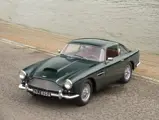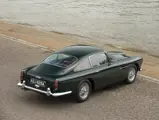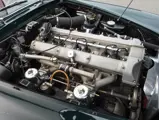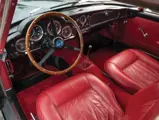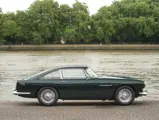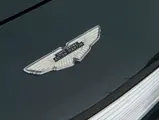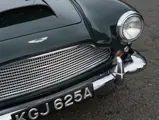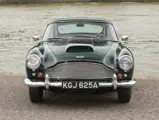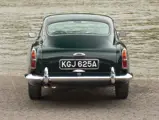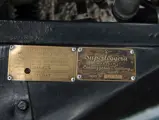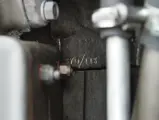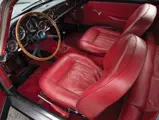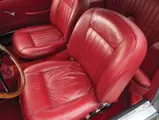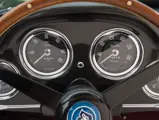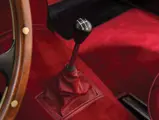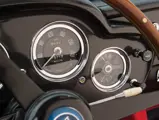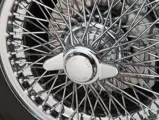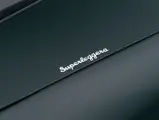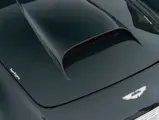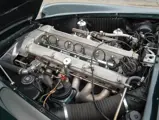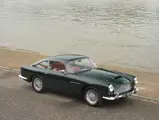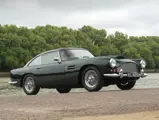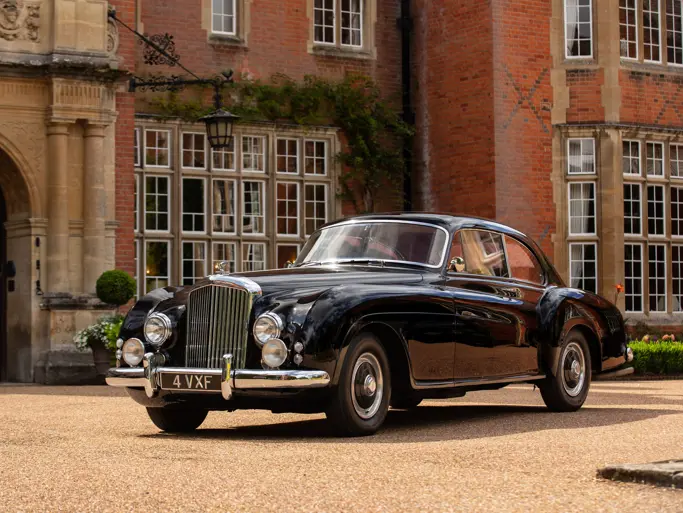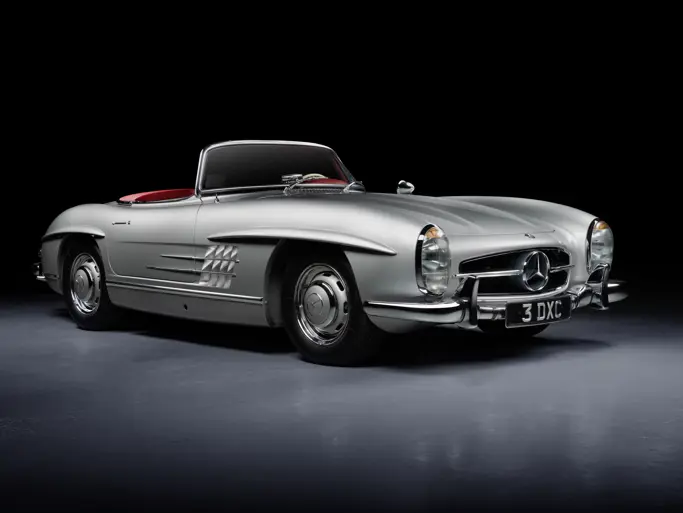London 2016
1961 Aston Martin DB4 Series II
{{lr.item.text}}
£515,200 GBP | Sold
 | London, United Kingdom
| London, United Kingdom
{{internetCurrentBid}}
{{internetTimeLeft}}

- Desirable LHD Series II finished in original colours
- Original numbers-matching engine
- Three owners from new
- Documented with original UK logbook, invoices, and service history
- Includes correct jack, hammer, and tool roll
240 bhp, 3,670 cc DOHC inline six-cylinder engine with dual SU HD8 carburettors, four-speed manual transmission, independent front suspension with unequal transverse wishbones, coil springs, and Armstrong shock absorbers; live rear axle with coil springs located by Watt’s linkage; and four-wheel Dunlop disc brakes. Wheelbase: 2,490 mm
Forerunner to Aston Martin’s most famous design, the DB4 stunned at the 1958 Paris Motor Show. A marriage of sturdy British engineering and jaw-dropping Italian styling, the all-new model catapulted the sports car manufacturer onto the world stage. Super-fast, super-light, and incredibly stylish, it became an instant success.
The plans for what would become the DB4 were already in motion by 1954, with the first prototype completed in 1956. The original designs, completed by Frank Feeley, consisted of a tubular chassis with a front wishbone and rear de Dion suspension. After several rounds of testing, it became clear that the in-house–designed body was too flexible—a tubular frame was required, and at the time, for visionary company owner David Brown, there was only one firm worth consulting.
Carrozzeria Touring of Milan had engineered and perfected the Superleggera (super light) system of coachbuilding, which utilised small-diameter steel tubes as a skeleton of the ultimate body shape. These tubes were then covered in aluminium body panels, strengthening the framework and providing stiffness while allowing for design flexibility. It fell to Harold Beech to redesign a completely new platform chassis in just six weeks. The hallmarks of his elegant design continued to be found on Aston Martin models for the next four decades. The de Dion rear suspension of the prototype was ultimately swapped for a live axle set-up, producing a much quieter ride.
The combination of Beech’s platform chassis and Touring’s elegantly designed body had all the markings of a successful grand tourer; however, it was the addition of Tadek Marek’s all-new 3.7-litre inline six-cylinder engine that catapulted the DB4 to icon status. Fitted with twin SU HD8 carburettors, the engine produced an astounding power output of 240 brake horsepower at 5,500 rpm. Capable of a maximum speed of 140 mph, and performing a dash to 60 mph in under 9 seconds, the DB4 was immediately one of the fastest cars on the market. Hailed by The Autocar as “the fastest production four-seater yet tested”, the DB4 was consistently praised for its elegance, speed, and hand-built quality.
Over the five years it was in production, the DB4’s design was continually developed both cosmetically and mechanically. The Aston Martin Owners Club has retroactively separated the production history of the DB4 into five distinct Series, corresponding to significant updates made to the model over time. The original Series I DB4s are distinguishable by the back-hinged bonnet and lack of window frames or bumper over-riders on the very early cars, but they suffered from oil starvation due to a too-small sump. Series II cars, such as this example, were superficially similar to the Series I, with its tall bonnet scoop and handsome ‘cathedral’ tail lamps, but with vastly improved mechanicals.
The Series II DB4 was first shown in January 1960. The front-hinged bonnet was the most significant change; this feature became a prominent design on every Aston Martin model through the remainder of the 20th century. The other noticeable exterior tweak was the adoption of window frames above the doors, which reduced wind noise. Under the skin, however, the Series II was improved dramatically. The front callipers were uprated, and a radiator blind was offered. In response to complaints about engine overheating, the sump was increased from 15 pints to 17, the oil pump was uprated, and an oil cooler was added as an optional extra.
The contemporary collector has identified the Series II as the quintessential DB4. Its smart perforated front grille, along with its purposeful bonnet scoop from the Series I, coupled with the cathedral lamps in the rear, retain the purity of the visually stunning Touring design, while the technical and mechanical improvements made to Series II models make it more reliable and a joy to drive. After approximately one year of production, 349 Series II DB4s had been made.
The model on offer here is certainly among the most original Series II, as well as perhaps the best-maintained example that survives. One of only 125 factory left-hand-drive cars, chassis number DB4/490/L is presented here in its original specification, with the addition of a Harvey Bailey front anti-roll bar (a common upgrade, available in period). Still present on the car are the optional oil cooler and chromed wire wheels mentioned on the factory build record.
Complete with the original matching-numbers engine and four-speed David Brown gearbox, this DB4 has maintained its factory colours of Goodwood Green with Red Connolly leather interior. With only three owners from new, the vehicle was first kept by Aston Martin Lagonda itself before being sold to an Italian enthusiast in 1963. Chassis number 490/L remained in his family until 2005, when it was sold to the current owner and imported back to the United Kingdom. The past 10 years are recorded in the accompanying service records and show a pattern of careful maintenance and detailed attention. Included with the car are copies of the original UK logbook, period-correct jack and hammer, tool kit, and Aston Martin Heritage Trust heritage certification. As it has been cared for by Aston Martin Works and Aston Martin Heritage specialist Nicholas Mee & Co, no expense has been spared in maintaining this exceptional, highly original, and desirable DB4.
The success of the DB4 secured the future of Aston Martin for the next 25 years while paving the way for its successor, what would become the most famous car in the world. A true connoisseur’s car, DB4/490/L offers an opportunity to own a piece of history from the beginning of what many consider to be the “Golden Years” of Aston Martin.

